
Daydream of big smallmouth bass, and your mind might drift off to the waters of northern Michigan or the lakes of eastern Tennessee. But today, you can add the desert impoundment of Lake Havasu to your dream list of prime smallmouth waters. And the scenery is breathtaking, with red-rock cliffs and cactus-studded shores serving as a stark counterpoint to the Havasu’s sparkling waters and great fishing.
Created in the early 1940s with the completion of the Parker Dam on the Colorado River, Havasu lies along a 45-mile stretch of the Arizona/California border in the Mojave Desert and offers approximately 450 miles of shoreline. While largemouth bass and striped bass served as the major attractions for decades, in more recent years, smallmouth bass have gained status as the darling species among bass-fishing enthusiasts. I had the opportunity to sample this great fishery with Suzuki-sponsored bass pro Dean Rojas.
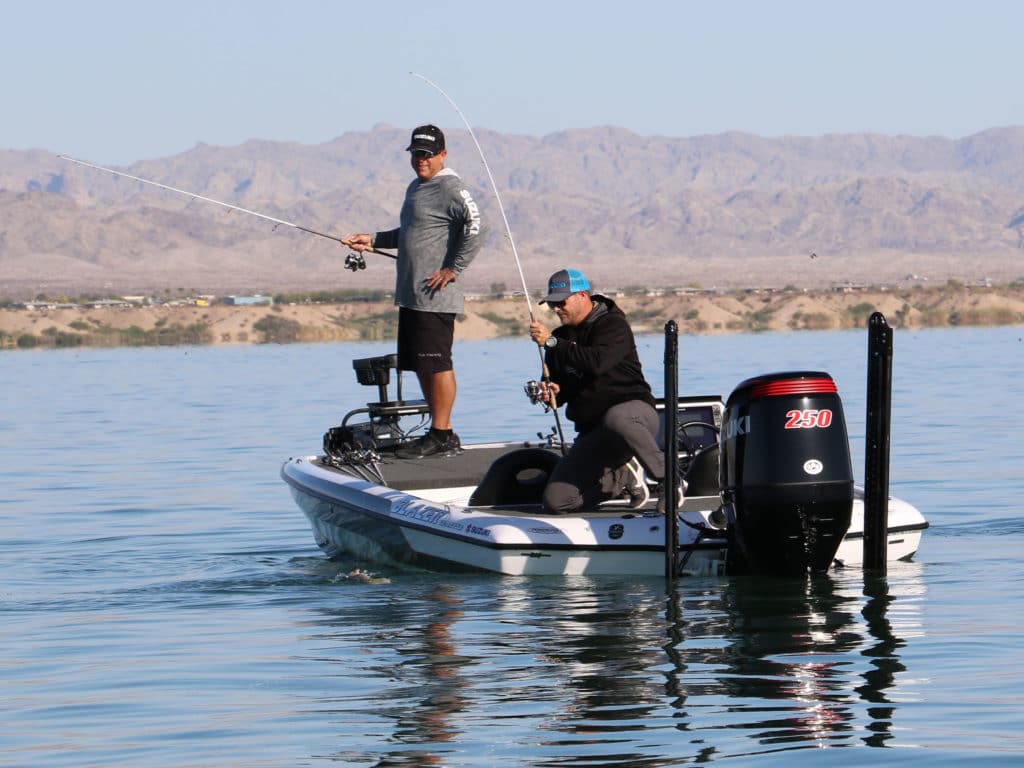
Rojas has successfully competed in professional bass fishing since 1997. In 1999, he was named Angler of the Year in the B.A.S.S. Western Division. In the 2000/2001 B.A.S.S. season, he won the Lake Toho 150 event in Kissimmee, Florida. He followed that achievement with another win on the next stop in the circuit at the Louisiana Top 150 at Toledo Bend. That year Rojas placed second for overall season winnings of $333,940.
Rojas continues to compete as a bass pro in tournaments throughout the United States, but he lives in Lake Havasu City, Arizona, and there’s a good reason he has chosen this location as his home base. “It’s a beautiful town,” he points out, “But I really wanted to live near a lake that would be a good training ground.”
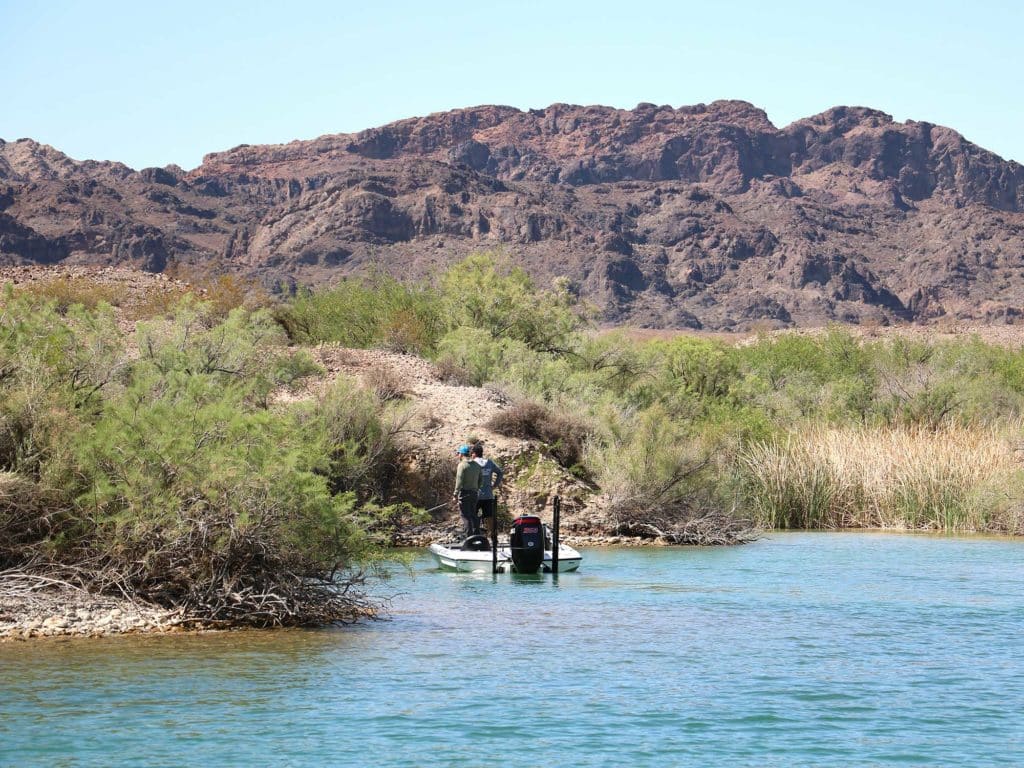
Havasu provided the perfect waters in which to practice. At the time, bass fishing was only so-so, Rojas says, but that combined with a wide range of freshwater habitats helped him hone his skills for competitive fishing. “You can fish in shallow or deep water, in dirty water or clear, or around rocks or tule reeds,” he explains. “I needed to fish all of those bass habitats to round out my fishing skills.”
Smallmouth bass fishing improved over the intervening years, and today there’s a thriving population of the species known affectionately as brown bass. Today, the lake-record smallmouth bass stands at 6.28 pounds, caught in February 2017 by Sue Nowak. Rojas regularly catches smallies in the 4-pound range and even larger.
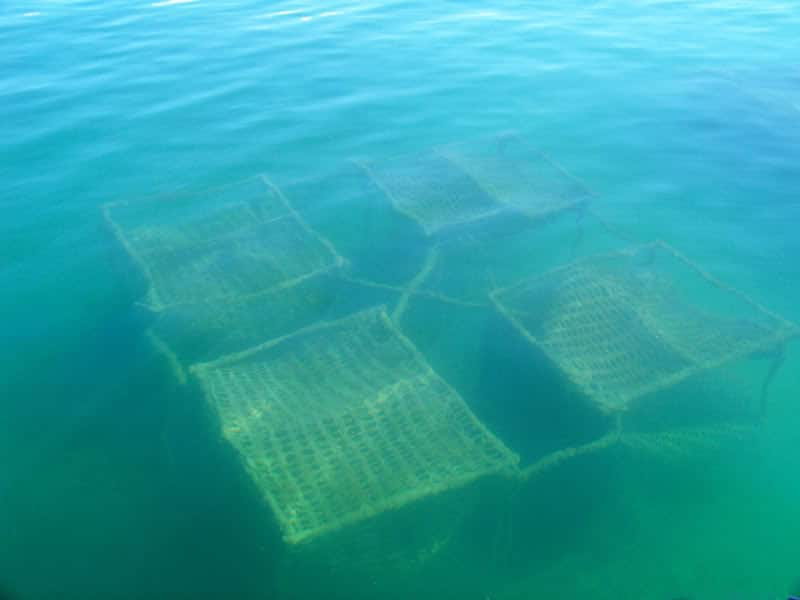
During our trip in late April, most of the smallmouth bass on Lake Havasu had reached their post-spawn mode, and were moving away from the shallows out to channel edges, drop offs, submerged brush and artificial cage-like fish habitats placed around the lake in the 1990s by the U.S. Bureau of Land Management to help improve fishing.
“Smallmouth bass like to roam about and hunt for forage, rather than stake out a spot” Rojas says. “They like to cruise around ledges, rocks and artificial reefs in spring and summer.” We focused much of our effort on channels leading in and out of marinas and boat launch ramps, steep drop-offs along shorelines and points. Eight feet seemed like the magic depth during my trip.
Rojas uses the electric trolling motor on the bow of his Suzuki 250SS-powered Blazer 650 Pro Tour bass boat to cruise along these areas, many of which are visible in Havasu’s clear waters. Other times, he uses the Lowrance HDS-12 Live sonar to find such structure, then backs off to cast to the prime smallmouth habitat.
In this video, bass pro Dean Rojas describes how he rigs and effectively fishes drop-shot rigs for smallmouth bass on Lake Havasu. Jim Hendricks
The veteran bass pro employs a light spinning outfit and a drop-shot rig. This style of finesse fishing calls for using 6- to 7-pound-test fluorocarbon line and tying on a size 2, 1 or 1/0 Gamakatsu drop-shot hook with a Palomar knot, leaving a 14- to 20-inch-long tag line below the hook. The hook point should orient upward. To the end of the tag, Rojas ties a tungsten drop-shot sinker ranging from 5/16 to ½ ounce.
On my trip, Rojas used a 5-inch custom hand-poured plastic worm, rigged wacky style (pinned through the mid-section) to impart greater action, but the drop-shot also works well with grubs, fluke-style baits, and craw baits. The technique calls for casting out and working the drop-shot rig by lightly shaking the rod tip on a slack line, then pulling it a few feet and repeating.
Read Next: How to Catch Kokanee Salmon

The bite often proves subtle and light. Rojas calls it a pressure bite. “If you feel pressure, try not to swing hard,” he advises. “Just reel down as you might with a circle hook, as these drop-shot hooks are sharp and tend to set themselves.” If you swing with too much force, you can break the line on a large bass.
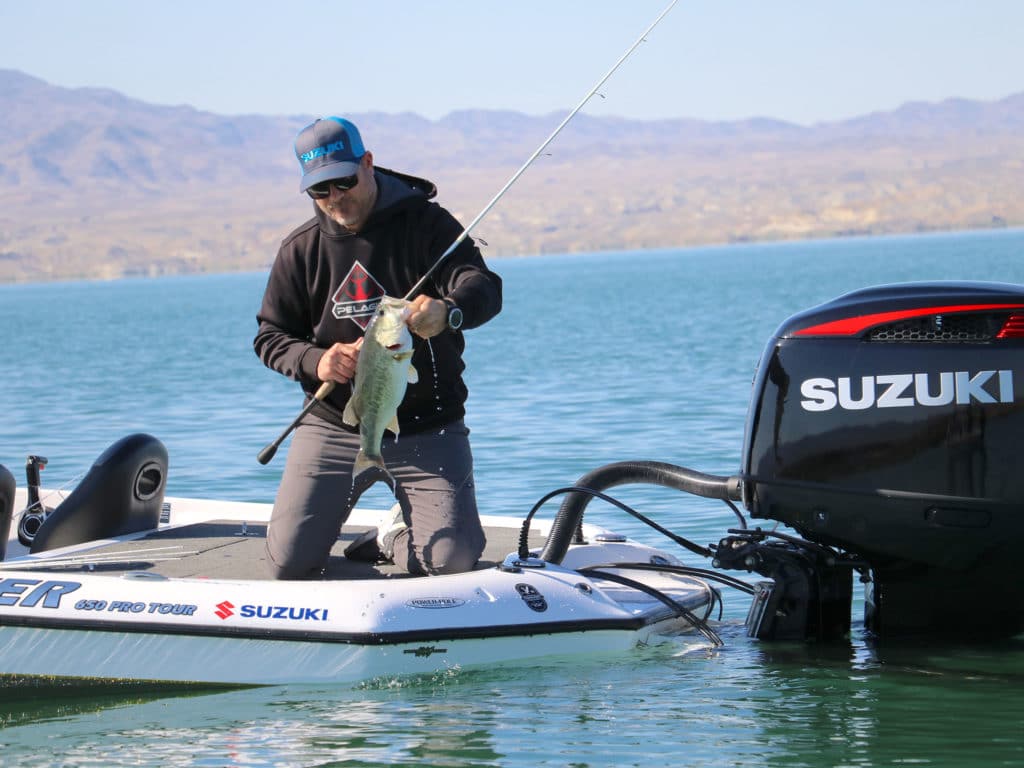
Our four-hour trip on Havasu with Rojas resulted in a number of nice smallmouth and largemouth bass, all caught using his drop-shot technique. Our bigger fish included a 4-pound smallie.
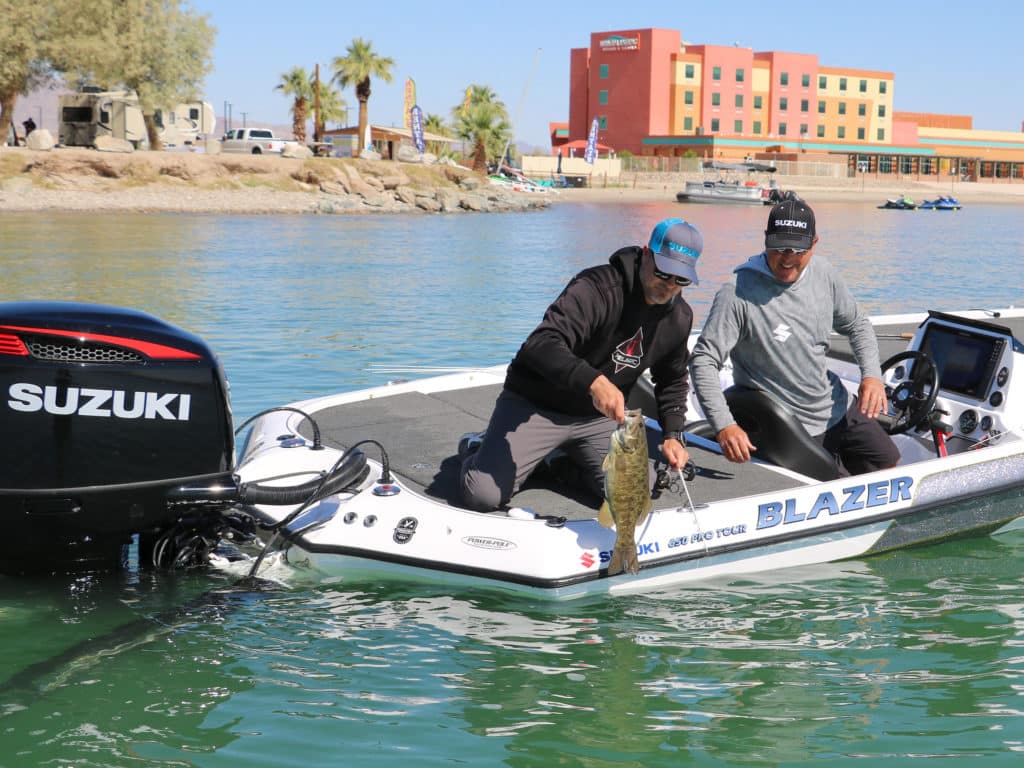
Smallmouth bass fishing remains strong throughout the year on Lake Havasu, though you might want to think twice about braving the oppressive desert heat to catch a smallmouth bass in summer. Temperatures can soar to 118 degrees F or more, giving new meaning to the expression, hot fishing. But whenever you go, Havasu can serve up superb smallmouth action, putting this desert impoundment on par with the famous brown bass waters of northern Michigan or eastern Tennessee.








